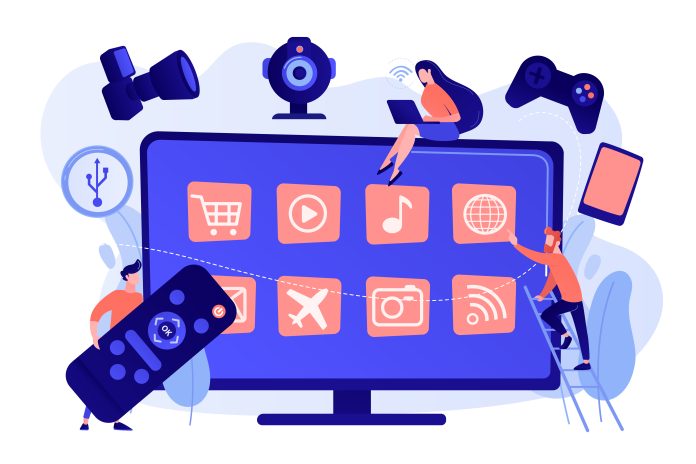The clash between tradition and innovation often sparks intriguing debates in an age where entertainment is intricately intertwined with technological advancements. One such debate centers around signal quality and reception in television broadcasting, pitting the cutting-edge NextGen TV against the tried-and-true methods of traditional broadcasting. At the crossroads of these two approaches lies a convoluted interplay of factors that shape our viewing experience. This comprehensive analysis delves into signal quality and reception, meticulously comparing the game-changing NextGen TV with its traditional counterpart.
NextGen TV: A Glimpse into the Future
NextGen TV, also known as ATSC 3.0, is symbolic of the broadcasting landscape’s evolution. Its promise of superior signal quality and reception capabilities raises the bar for television enthusiasts and technophiles alike. Key features that define NextGen TV’s prowess include:
Enhanced Picture and Sound Quality
NextGen TV capitalizes on advancements in display and audio technologies to deliver an immersive experience. With support for 4K Ultra HD and High Dynamic Range (HDR), viewers are treated to sharper images and more vibrant colors. The result? A viewing encounter that is not just engaging but truly captivating.
Robust Signal Resilience
One of the most compelling aspects of NextGen TV is its ability to withstand signal interruptions and disruptions. Advanced modulation techniques bolster its resistance to interference, ensuring viewers enjoy uninterrupted streams even in challenging conditions. This resilience is especially valuable in densely populated urban areas, where signal congestion dampens the viewing experience.
Interactivity and Personalization
NextGen TV’s innovative architecture allows for real-time interaction and customization. Whether it’s accessing supplementary information about a show, personalizing content recommendations, or engaging with polls related to the program, viewers are empowered with a level of engagement that traditional broadcasting can’t match.
Traditional Broadcasting: A Nostalgic Touchstone
We encounter a narrative steeped in nostalgia as we juxtapose NextGen TV’s capabilities with traditional broadcasting methods. Traditional broadcasting, while lacking some of the technological flair of its modern counterpart, continues to possess its own set of merits:
Familiarity and Ubiquity
Traditional broadcasting methods have been the bedrock of television for decades. The ubiquity of these systems means that almost every household with a television can access content without needing specialized equipment.
Simplicity in Reception
Traditional broadcasting’s signal reception is straightforward, requiring only an antenna to capture over-the-air transmissions. This simplicity makes it an attractive option for viewers who seek ease of setup and operation.
Cost-Effectiveness
While NextGen TV’s advanced features command a certain investment, traditional broadcasting remains economical. The cost-effectiveness of traditional broadcasting systems can’t be overlooked for budget-conscious viewers.
IPTV: The Digital Revolution
Another contender steps onto the stage during this comparison: IPTV or Internet Protocol Television. IPTV brings a digital revolution to broadcasting, offering a breadth of content and capabilities that traditional methods may struggle to match:
Content Diversity and Flexibility
HD IPTV harnesses the power of the internet to deliver a diverse range of content. From live TV channels to video-on-demand (VOD) libraries, IPTV provides an expansive selection that caters to various preferences.
Global Accessibility
IPTV’s global accessibility shatters geographical constraints. With the internet as its conduit, IPTV grants viewers access to content worldwide, enriching the cultural and entertainment experience.
Interactive and On-Demand Features
Much like NextGen TV, HD IPTV enables interactive features and on-demand content. Pause, rewind, and fast-forward become integral to the viewing journey, empowering users to tailor their experience.
The Verdict: A Spectrum of Choices
As the curtains draw on our analysis, it becomes evident that the comparison between NextGen TV and traditional broadcasting is not a black-and-white affair. Each approach brings its strengths to the table, catering to diverse viewer preferences and needs.
NextGen TV emerges as a powerful contender for those seeking cutting-edge visuals, interactivity, and signal resilience. Conversely, traditional broadcasting and its cost-effectiveness, simplicity, and nostalgic charm continue to capture a loyal audience.
In the backdrop of this dynamic landscape stands IPTV, offering a digital alternative that transcends geographical and technological boundaries.
In the end, the best choice depends on your individual preferences, your viewing environment, and your appetite for innovation. It’s an era of possibilities, where the television landscape presents a spectrum of choices that promise to redefine how we consume content.
A Comprehensive Overview
The comparison between NextGen TV and traditional broadcasting isn’t a clear-cut decision. Each approach brings unique strengths to the table, catering to diverse preferences and needs. NextGen TV dazzles with technological advancements, while traditional broadcasting offers familiarity and simplicity. With its global reach and interactive capabilities, IPTV reshapes how we consume content.
Frequently Asked Questions
Conclusion
As technology forges ahead, the debate surrounding signal quality and reception remains dynamic. NextGen TV and traditional broadcasting bring their strengths, while IPTV introduces a new dimension to television consumption. The decision ultimately rests on personal preferences, technological adoption, and the desire for enhanced entertainment. Viewers can embrace the television experience that aligns with their aspirations and needs by navigating these choices.



